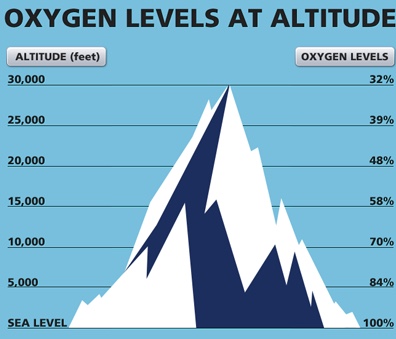We’ve both been a little short of breath the last few days. Duh. We just realized that neither of us have ever spent this long at high altitude. San Pedro de Atacama sits at 7,900 feet.

OutdoorPlaces.com explains what can happen at altitudes of 6,000 to 10,000 feet:
In this altitude range, some people may start to experience problems related to altitude. AMS, or Acute Mountain Sickness symptoms may set in at any altitude above 6,000 feet. At 10,000 feet, the atmosphere is only 50% of that found at sea level. Breathing can become difficult, even for those in good condition. Women who are pregnant and people with cardiopulmonary disorders should consult a physician before spending any time at these altitudes.
No kidding. The slightest exertion leaves us short of breath and gasping slightly for that next lungful of air. Nothing dangerous, nothing scary, but we can certainly tell the difference.
We tried to think of any other time when our travels may have taken us to a an altitude higher than 7,900 feet. We flicked the pages backward in our minds and came up with a few candidates, but they all fell short when I Googled their altitudes until until we came up with Gornergrat in Switzerland. It sits at 10,285 feet and is surrounded by 29 peaks of more than 13,000 feet. But we were there for less than an hour, and it takes considerably longer than that for altitude sickness to kick in.
So here’s the question: Are we really suffering from altitude sickness or is it something psychosomatic because there’s something oddly romantic and dramatic about the concept of suffering from it?
Hmmmm.
The altitude is why some people chew coca leaves in other places.
They chew ‘em here. I bought a T-shirt with a cool coca leaf design. Underneath the leaf it says “The leaf is not a drug” in Spanish. We saw little packages of coca leaves for sale in a store the other day. I was tempted to buy and try, but figured I’d be the guy they arrest.